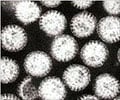Surgeons have claimed that a new minimally invasive surgery can correct a chest wall deformity- often known as pigeon chest.
Technically known as pectus carinatum, the condition causes the chest wall to protrude outward, giving the patient's chest the appearance of the breast of a bird.Earlier, the only surgery to correct severe cases was extremely invasive and involved cutting open the chest to remove excess cartilage.
Because of the invasive nature of the surgery, the condition often went uncorrected.
"For many years, the medical community treated pectus carinatum as a merely cosmetic issue. Pectus carinatum causes real physical and psychological problems for young people. We want physicians to understand that this condition should be treated. No child should have to suffer with it," said Dr. Robert Kelly, a pediatric surgeon at CHKD.
The new surgical technique was developed in South America by surgeons trained in a minimally invasive technique developed by CHKD paediatric surgeon Dr. Donald Nuss to correct pectus excavatum, a related condition that causes the chest to protrude inward.
The "Nuss technique" involves passing a curved bar inside the chest cavity, below the rib cage, to push out the indentation from underneath.
Advertisement
In South America, where the outward protrusion is more common, surgeons developed what some doctors call a "reverse Nuss" in which the bar runs beneath the musculature, but above the ribs, pushing down the protruding section of cartilage. Again, the bar is removed after the condition is corrected.
Advertisement
At the same conference, CHKD's team of paediatric surgeons, physical medicine physicians and physical therapists demonstrated another device that, in the majority of the cases, can correct pectus carinatum before it becomes so rigid that surgery is required.
"Both of these techniques are major advances in correction of pectus carinatum," said Nuss.
The researchers demonstrated the new technique at an international conference attended by surgeons from the U.S., Canada, Argentina, Chile, Panama, Puerto Rico, Germany, Spain and Russia.
Source-ANI
RAS











